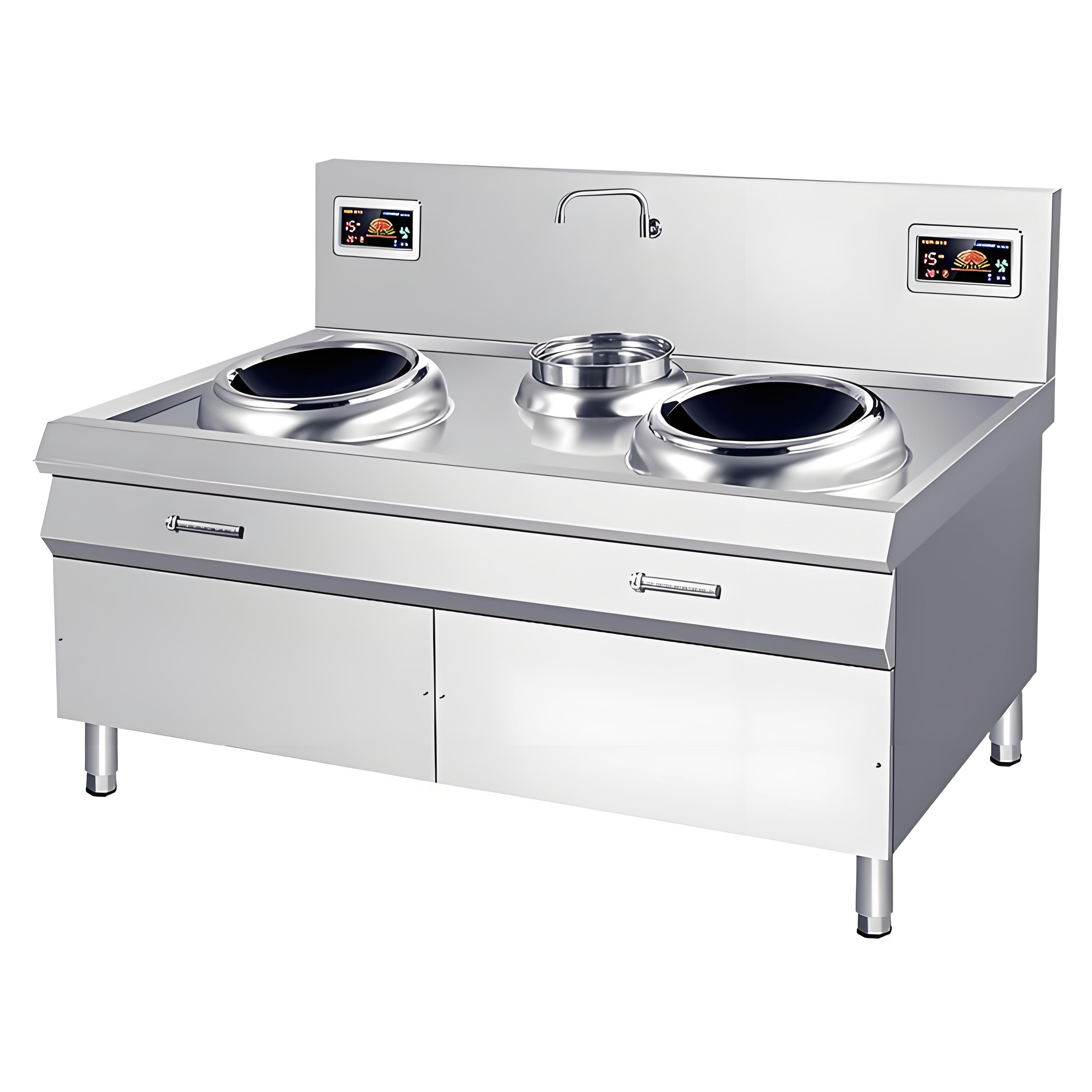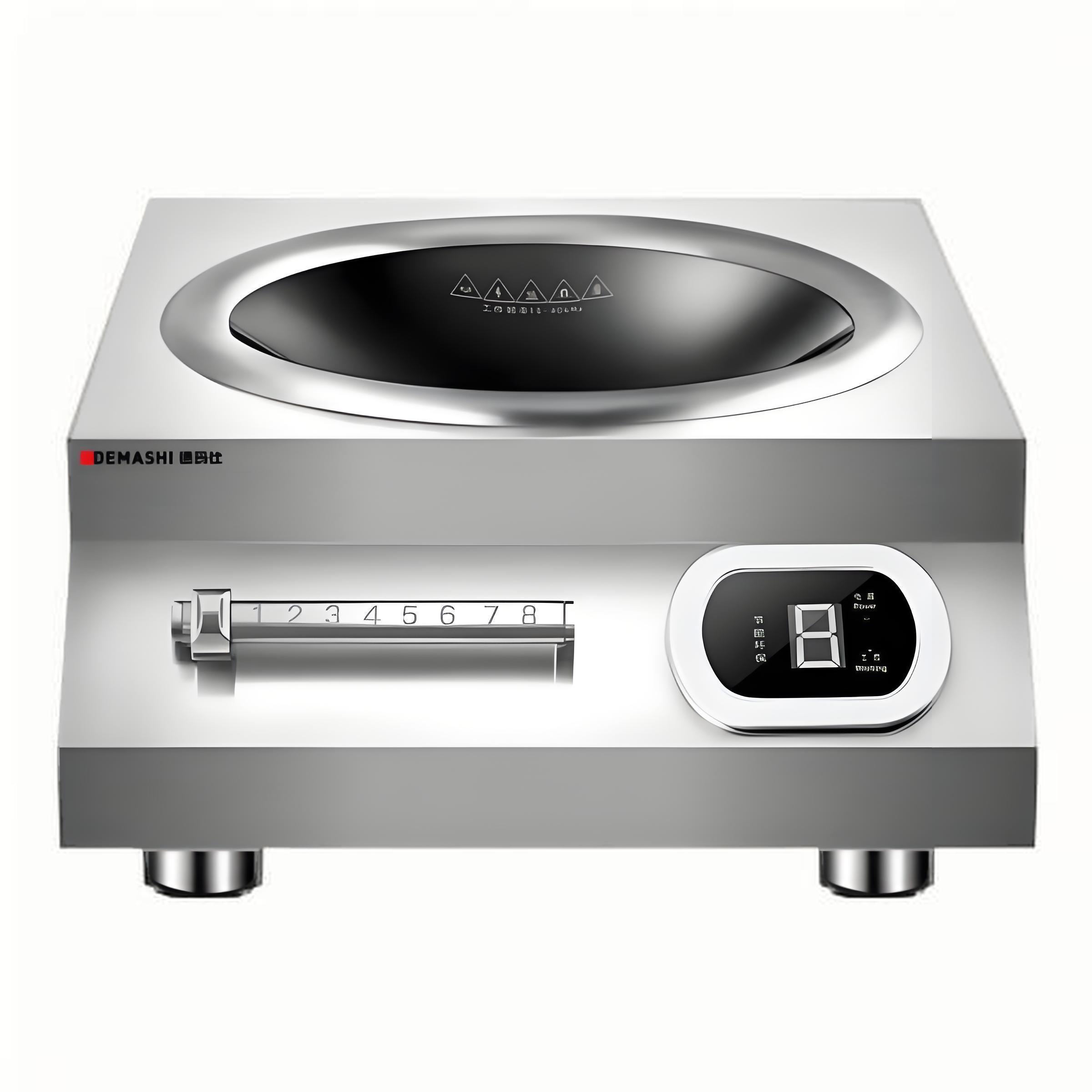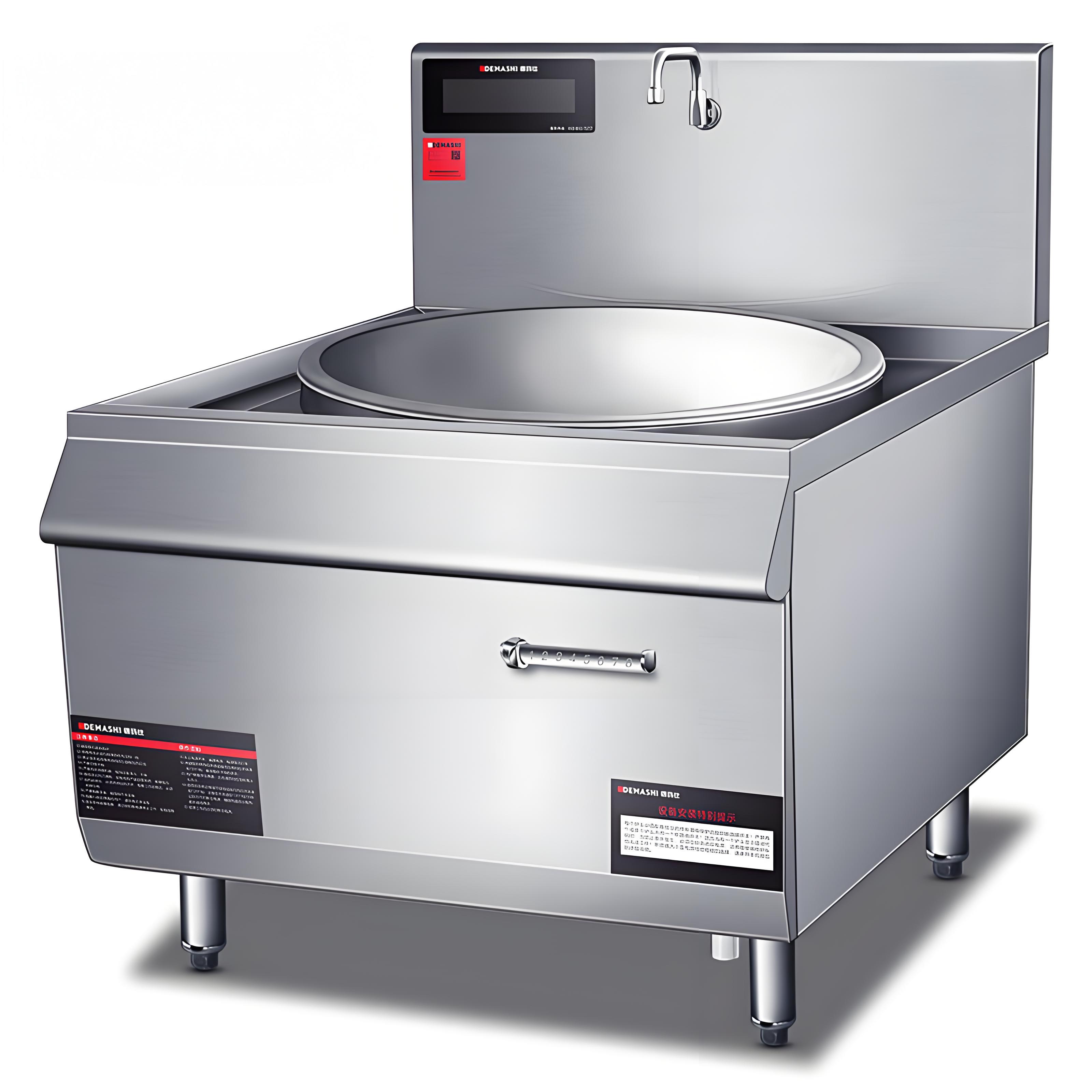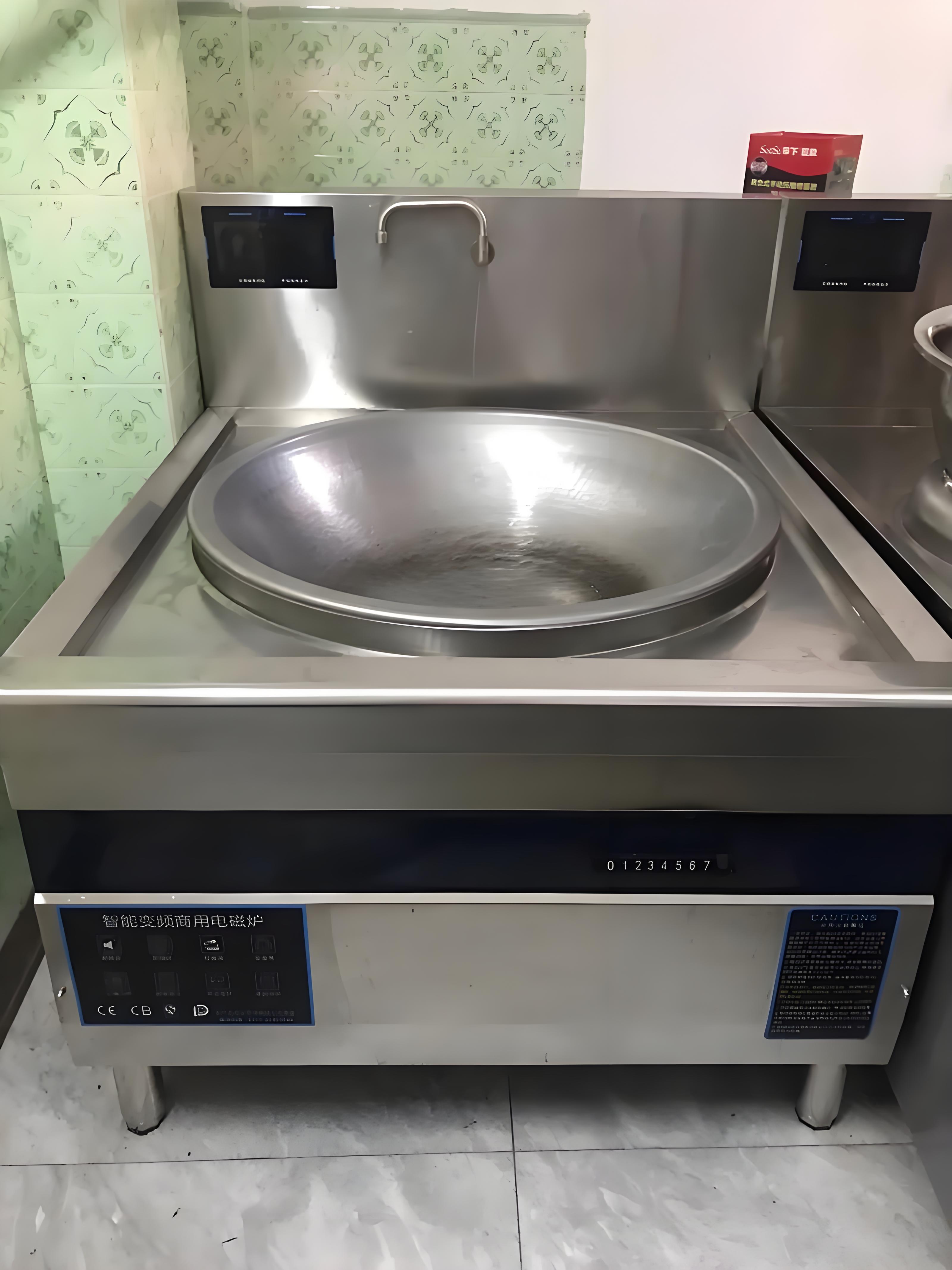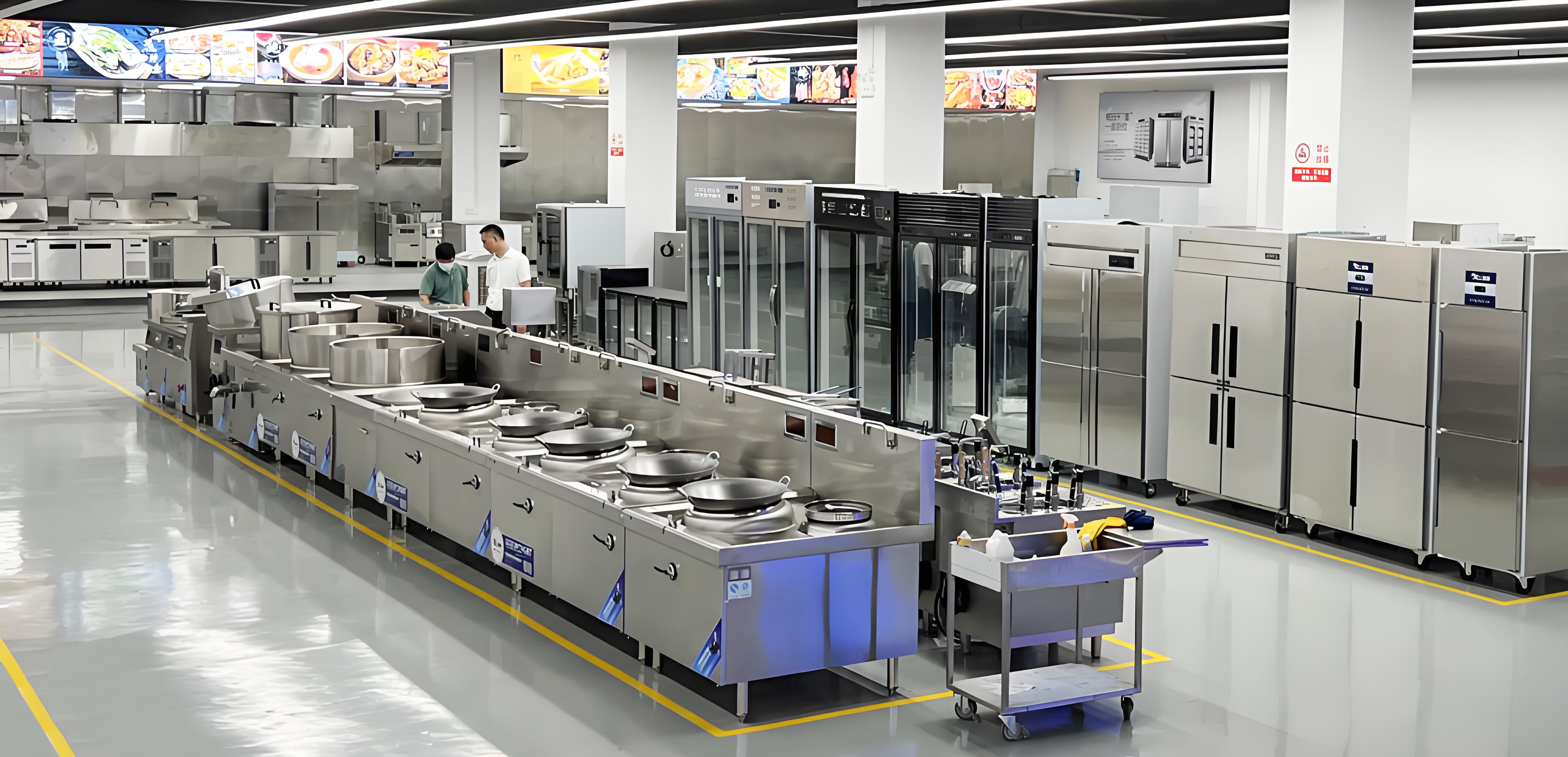Having spent over a decade in the commercial kitchen equipment industry, I’ve worked with countless restaurants, hotels, and catering businesses that rely on induction cookers for their speed and precision. But one concern keeps coming up: How can we make these machines more energy-efficient? With energy costs rising and sustainability becoming a priority, finding ways to cut down on electricity usage without sacrificing performance is crucial for any business. In this article, I’ll share practical, field-tested methods to help you save energy with your commercial induction cooker, drawing from my own experiences and insights gained from working with chefs and kitchen managers across various settings.
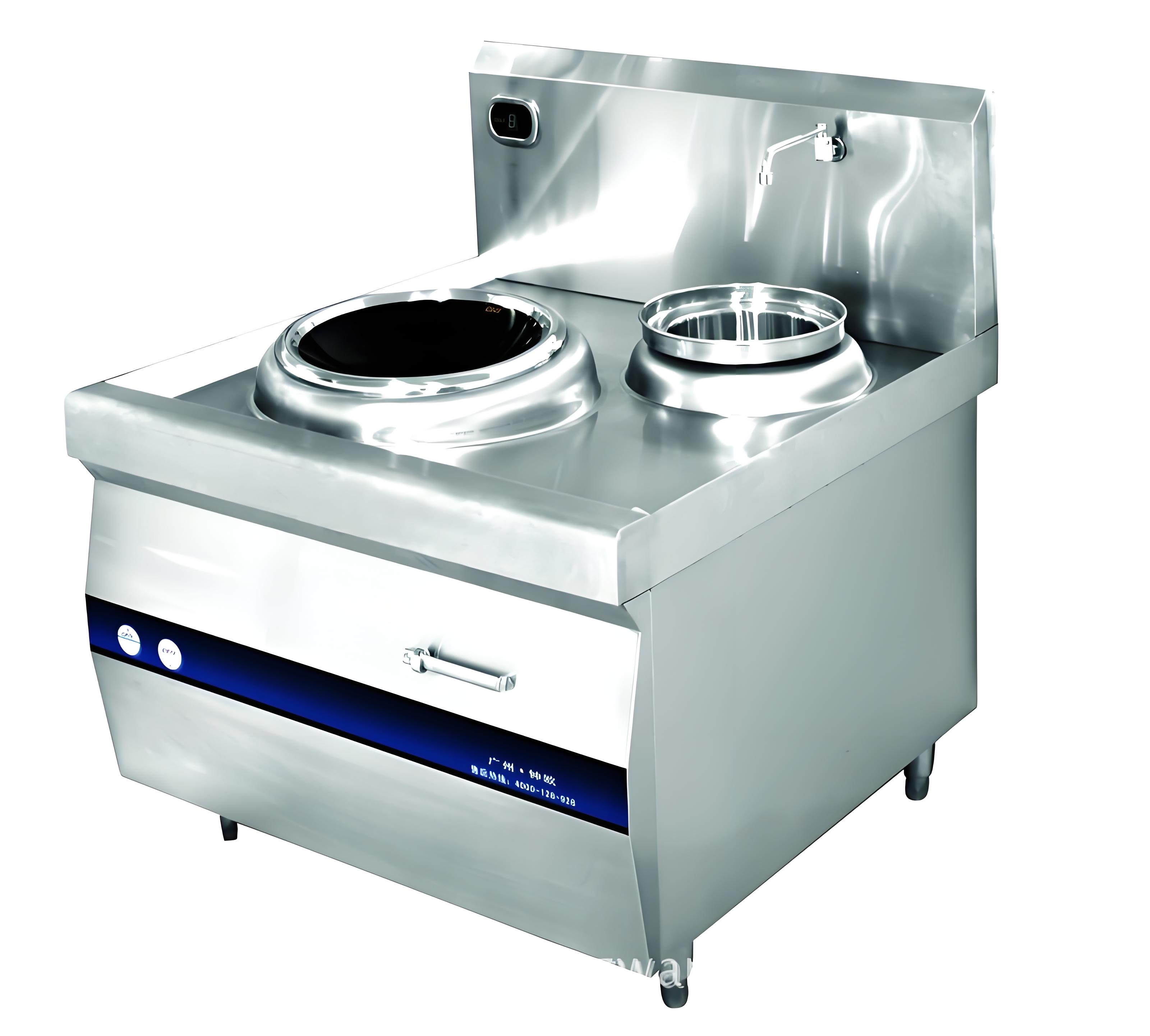
Understanding Induction Cooker Energy Efficiency
Before diving into specific strategies, let’s clarify why induction cookers are already a smart choice for energy-conscious kitchens. Unlike gas stoves (with 40% energy efficiency) or traditional electric cooktops (74% efficiency), induction cookers boast an impressive 85–90% energy efficiency. This is because they heat cookware directly through magnetic fields, minimizing energy waste. However, even with this advantage, there are ways to optimize their performance to save even more electricity, especially in high-volume commercial settings where every watt counts.
I recall visiting a bustling dim sum restaurant in Guangzhou where the kitchen was running multiple induction cookers for hours daily. By implementing a few tweaks, they reduced their energy consumption by 15%, saving thousands in annual utility bills. Let’s explore how you can achieve similar results.
Choose the Right Cookware
The type of cookware you use is critical for maximizing energy efficiency. Induction cookers require ferromagnetic materials like cast iron or stainless steel, but not all cookware is created equal. High-quality, flat-bottomed pans with thick bases ensure optimal contact with the cooking surface, reducing energy loss by up to 20%. Thin or warped cookware can cause uneven heating, forcing the cooker to work harder and consume more electricity.
Here’s a quick guide to choosing energy-efficient cookware:
|
Cookware Type |
Material |
Energy Efficiency |
Best Use |
|---|---|---|---|
|
Cast Iron |
Ferromagnetic |
High (90%+) |
Stews, frying |
|
Stainless Steel |
Ferromagnetic |
High (85–90%) |
General cooking |
|
Aluminum (non-ferromagnetic) |
Non-compatible |
Not usable |
N/A |
|
Multi-layer Base |
Ferromagnetic |
Very High (95%+) |
High-volume kitchens |
I once advised a catering company that was struggling with high energy bills. They were using mismatched, low-quality pans that didn’t fully connect with the cooker’s surface. Switching to multi-layer stainless steel cookware improved their heating efficiency and cut energy use by 10%. Always check that your cookware has a magnetic base and fits snugly on the cooking zone.
Optimize Power Settings
One of the biggest mistakes I see in commercial kitchens is running induction cookers at full power unnecessarily. Most modern units offer precise power settings, typically ranging from 100W to 25 kW, allowing you to tailor the output to the task. For example, simmering sauces or slow-cooking dishes requires only 20–40% of maximum power, while boiling water or stir-frying might need 70–100%. Using the lowest effective setting can reduce energy consumption by 30–50% per dish.
In a fast-food chain I consulted for, chefs were accustomed to cranking up their 8 kW cookers to max for every task. By training staff to adjust power levels—using 2–3 kW for preheating and 5–6 kW for peak cooking—they saw a 25% drop in electricity usage without slowing down service. If your cooker has preset modes (e.g., for boiling or frying), use them to automate energy-efficient settings.
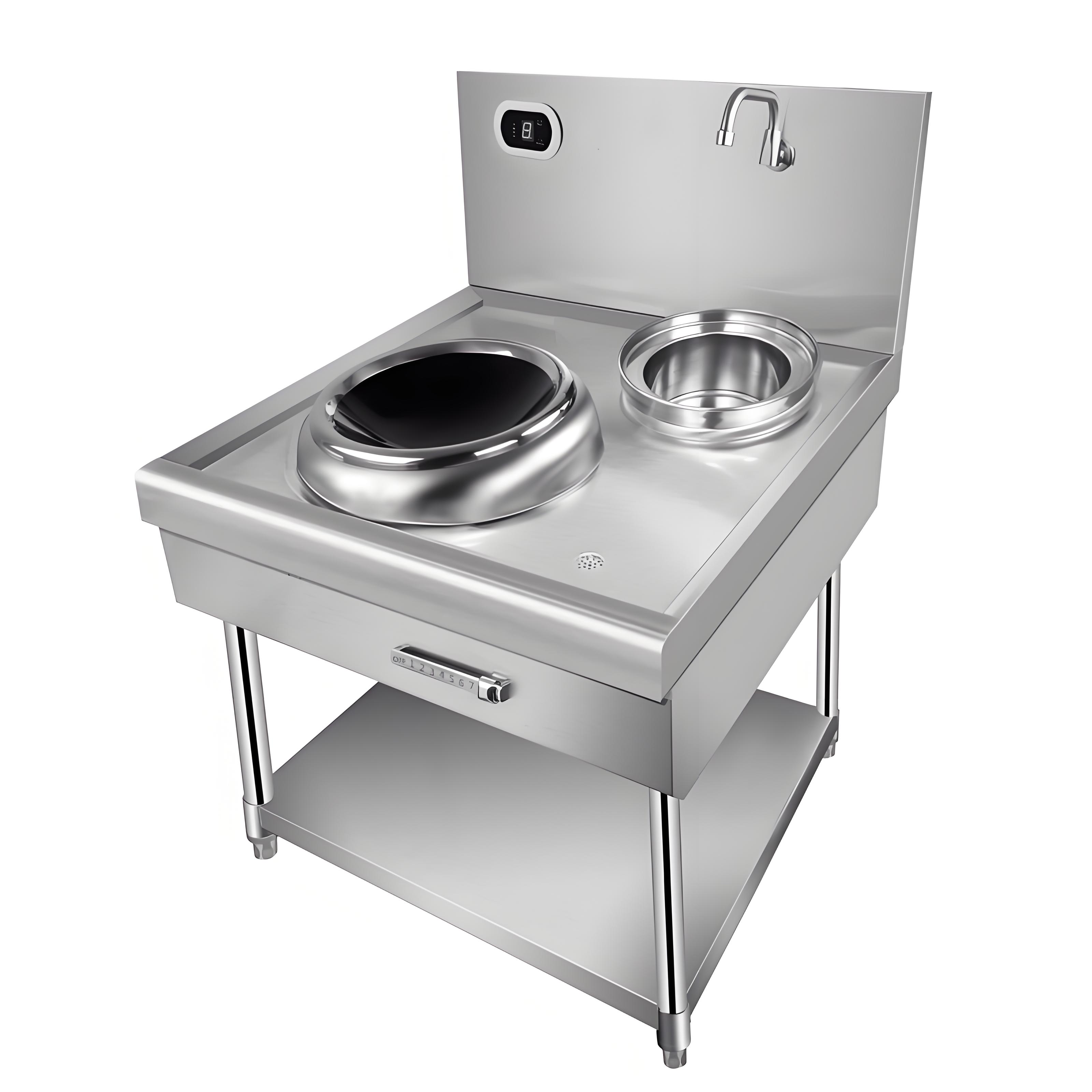
Maintain Your Equipment Regularly
Regular maintenance is often overlooked but can significantly boost energy efficiency. Dust, grease, or food splatter on the cooking surface can reduce heat transfer, causing the cooker to use more power to achieve the same results. Cleaning the glass-ceramic surface daily with a non-abrasive cleaner can improve efficiency by 5–10%. Additionally, check for wear on internal components like cooling fans, as clogged or faulty fans can lead to overheating and higher energy consumption.
I remember a hotel kitchen where neglected induction cookers were running 15% less efficiently due to grease buildup and worn-out fans. After a thorough cleaning and replacing a few parts, their energy bills dropped noticeably. Schedule monthly deep cleans and annual professional servicing to keep your units in top shape.
Use Smart Features Wisely
Many modern commercial induction cookers come with smart features like timers, temperature probes, or programmable settings. These can be game-changers for energy savings. For instance, setting a timer to automatically shut off the cooker after a dish is done prevents unnecessary power usage. Some high-end models, like those from COOKTEK or Lestov, offer IoT connectivity, allowing you to monitor energy usage remotely and optimize settings in real time.
In a Michelin-starred restaurant I worked with, chefs used programmable settings to automate cooking cycles for repetitive dishes like risottos. This reduced idle time and saved 10% on energy costs. If your cooker has these features, take the time to learn them—your utility bill will thank you.
Match Cooker Size to Cookware
Using cookware that’s too small for the cooking zone is a common energy-wasting mistake. Most induction cookers have sensors that detect the size of the pan and adjust the magnetic field accordingly, but mismatched sizes can still lead to energy loss. For example, a 6-inch pan on a 10-inch zone can waste up to 15% of the energy because the magnetic field extends beyond the pan’s base.
I once helped a small café reorganize their cookware to match their induction zones. By ensuring pans covered at least 80% of the cooking zone, they reduced energy waste significantly. Always check your cooker’s manual for recommended cookware sizes and stick to them.
Leverage Batch Cooking
Batch cooking is a practical strategy for energy efficiency in high-volume kitchens. Instead of heating up the cooker multiple times for small portions, prepare larger batches during off-peak hours. Induction cookers heat up quickly, but repeated startups consume extra energy. By consolidating cooking tasks, you can reduce startup cycles by 20–30%.
A catering business I advised shifted to batch cooking for their sauces and stews, using their 12 kW induction cooker at 70% power for longer sessions. This cut their energy use by 18% while maintaining food quality. Plan your menu to group similar cooking tasks together whenever possible.
Insulate and Cover Cookware
Using lids and insulation is a simple yet effective way to trap heat and reduce energy consumption. Covered pots retain up to 20% more heat, allowing you to lower the power setting without affecting cooking time. For tasks like boiling or simmering, a lid can cut energy use by 10–15%.
In a busy ramen shop I worked with, chefs initially resisted using lids to monitor broth consistency. After testing, they found that covered pots maintained the same quality at lower power settings, saving 12% on energy costs. Invest in high-quality, tight-fitting lids to maximize this benefit.

Train Your Staff
Staff training is crucial for energy-efficient operation. Many kitchen workers aren’t aware of how their habits—like leaving cookers on when not in use or using incorrect power settings—impact energy bills. A well-trained team can reduce energy waste by 15–25% through simple behavioral changes.
I once conducted a training session for a restaurant chain, focusing on induction cooker best practices. We covered topics like selecting the right power level, turning off units during downtime, and proper cookware use. Within a month, their energy consumption dropped by 20%. Create a checklist for your team and hold regular refreshers to reinforce these habits.
Upgrade to Energy-Efficient Models
If your induction cooker is outdated, consider upgrading to a newer, more efficient model. Modern units incorporate advanced technologies like dual-bridge inverters or improved coil designs, which can boost efficiency by 5–10% compared to older models. While the upfront cost might be high (ranging from $1,700 to $21,400 for commercial units), the long-term savings can be substantial.
A client of mine, a mid-sized restaurant, replaced their 10-year-old induction cookers with newer 8 kW models. The upgrade paid for itself in 18 months through energy savings and reduced maintenance costs. Check for energy certifications like ENERGY STAR or local equivalents when shopping for new units.
Monitor and Analyze Energy Usage
Finally, tracking energy consumption can help you identify inefficiencies and optimize usage. Some commercial kitchens use energy monitoring tools or smart meters to measure how much power their induction cookers consume. By analyzing this data, you can pinpoint wasteful practices and adjust accordingly.
In a hotel kitchen I consulted for, we installed a basic energy monitor and discovered that one cooker was left on standby for hours daily, wasting 10% of their total energy. After adjusting their workflow to power down during idle periods, they saved significantly. If your cooker has built-in energy tracking, use it; otherwise, consider investing in a standalone meter.
Practical Tips for Implementation
Here’s a quick summary of energy-saving strategies you can start using today:
|
Strategy |
Action |
Potential Savings |
Implementation Tip |
|---|---|---|---|
|
Right Cookware |
Use flat-bottomed, ferromagnetic pans |
Up to 20% |
Check pan compatibility with a magnet |
|
Optimize Power |
Adjust settings to the task |
30–50% per dish |
Train staff on power levels |
|
Regular Maintenance |
Clean surfaces, check fans |
5–10% |
Schedule monthly deep cleans |
|
Batch Cooking |
Consolidate cooking tasks |
20–30% |
Plan menu for off-peak prep |
|
Use Lids |
Cover pots during cooking |
10–15% |
Invest in tight-fitting lids |
Final Thoughts
Running a commercial kitchen is demanding, and every dollar saved on energy can make a big difference. By choosing the right cookware, optimizing power settings, maintaining your equipment, leveraging smart features, and training your staff, you can significantly reduce the energy consumption of your commercial induction cooker. My years in the industry have shown me that small, consistent changes—like using lids or matching pan sizes—add up to substantial savings over time. Whether you’re running a small café or a large hotel kitchen, these strategies can help you cut costs while maintaining the performance that makes induction cookers so valuable.
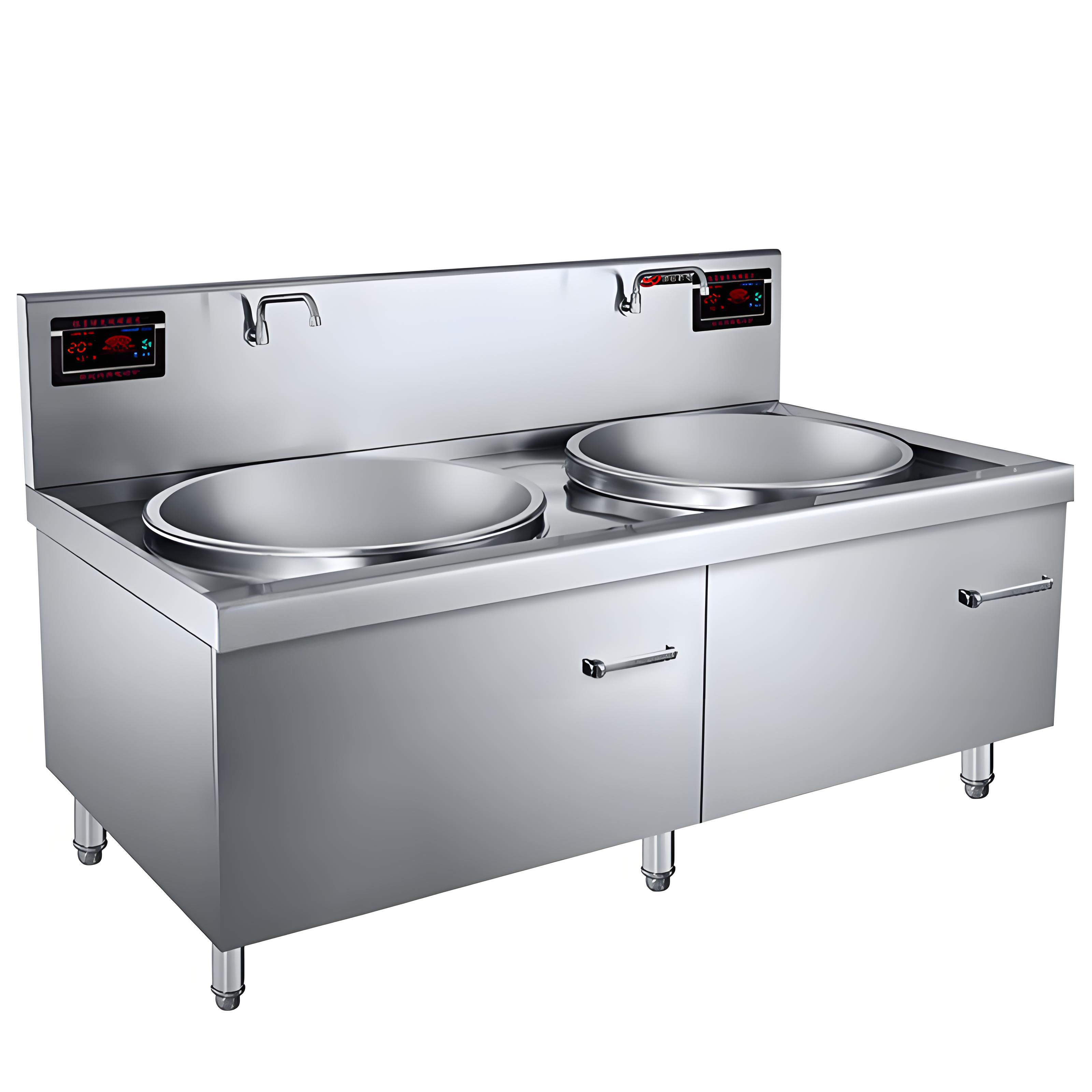
Take a moment to assess your kitchen’s setup and habits. Start with one or two of these methods, track the results, and build from there. Your bottom line and the environment will both benefit from a more energy-efficient operation.
Related Questions and Answers
Q: Can using the wrong cookware really make a big difference in energy consumption?
A: Absolutely. In my experience, mismatched or low-quality cookware can waste up to 20% of the energy due to poor heat transfer. For example, a café I worked with switched to multi-layer stainless steel pans and saw a 10% reduction in energy use. Always use flat-bottomed, ferromagnetic cookware that matches your cooker’s zone size.
Q: How often should I clean my induction cooker to maintain efficiency?
A: Daily surface cleaning with a non-abrasive cleaner prevents grease buildup, which can reduce efficiency by 5–10%. I recommend a deep clean monthly and professional servicing annually. A hotel client of mine saw noticeable savings after implementing this routine.
Q: Are smart features worth the extra cost for energy savings?
A: It depends on your kitchen’s scale. For high-volume operations, features like timers or IoT monitoring can save 10–15% by automating efficient settings. A Michelin restaurant I advised saved 10% with programmable cycles. Smaller kitchens might not need these extras if budget is tight.
Q: Is it worth upgrading an old induction cooker for energy efficiency?
A: If your cooker is over 10 years old, upgrading can save 5–10% on energy due to newer technologies. A restaurant I worked with recouped their investment in 18 months. Check for energy certifications and compare long-term savings to the upfront cost.
Q: How can I train my staff to use induction cookers more efficiently?
A: Create a simple checklist covering power settings, cookware selection, and turning off units during downtime. Hold brief training sessions and post reminders in the kitchen. A chain I consulted reduced energy use by 20% after a single training session.
